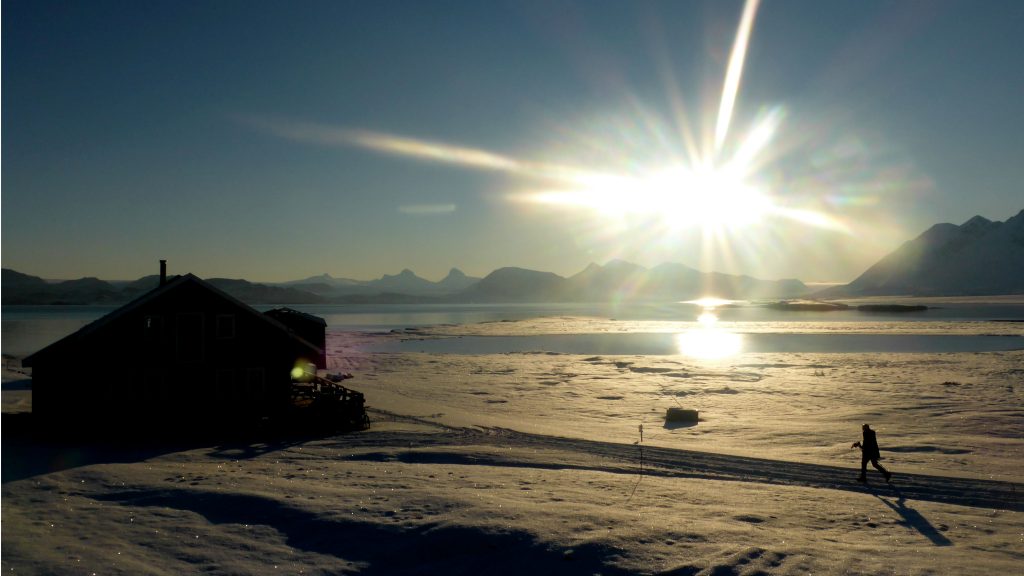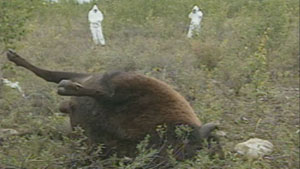Arctic warming four times faster than thought, says study

Although it’s well known that climate change is having dramatic impacts on the North compared to elsewhere in the world, new research suggests that the Arctic is warming significantly more than we thought.
In a recent paper published in the journal Geophysical Research Letters, researchers found that the Arctic is heating up to four times faster than the rest of the planet.
The researchers say their analysis was able to pick up what previous work hadn’t by decreasing the typical 30-year period used to calculate the Arctic amplification index, down to 21 years.
Arctic amplification refers to how the loss of snow and ice in North results in more dark areas of land and water which end up absorbing heat from the sun instead of reflecting it back into the atmosphere, which in turn causes more ice loss and more dark areas.
The Arctic amplification index refers to the ratio between the Arctic and the global mean static air temperature.
“Thirty years is considered the minimum to represent climate change,” Petr Chylek, a physicist and climate researcher at Los Alamos National Laboratory and lead author of the study, said in a statement.
“We decreased the time interval to 21 years. At that smaller time scale, and contrary to previous investigations that found the Arctic amplification index increases in a smooth way, we observed two distinct steps, one in 1986 and a second one in 1999.”
‘The average does not work in this case’
The Coupled Model Intercomparison Project (CIMP) is an international set of climate models that uses shared parameters and which has been used to do the recent Intergovernmental Panel on Climate Change Assessment Report.
The researchers examined 39 climate change models in CIMP and found that four of them reproduced the 1986 step, but none reproduced the 1999 step that the researchers detected.
“We attributed the first step to increasing concentrations of carbon dioxide and other pollutants in the atmosphere, because several models do it correctly, but the second step we think is due to climate variability because none of the models can reproduce the second step.”
Chylek said their findings could be an important guidepost going ahead when it comes to predicting future Arctic warming.
“Because the four models correctly reproduce at least the first step, we assume they’re a little better for future climate projection,” he said.
“People usually average all models and assume the ensemble is more reliable than any single model. We show the average does not work in this case.”
Write to Eilís Quinn at eilis.quinn(at)cbc.ca
Related stories from around the North:
Canada: “Our climate is changing before our eyes,” says WMO upon release of new report, Eye on the Arctic
Greenland: Climate change accelerating ice loss from peripheral glaciers, Eye on the Arctic
Norway: Will the green transition be the new economic motor in the Arctic?, Eye on the Arctic
Sweden: Sweden’s climate policies closer to reaching goals, Radio Sweden
United States: Bering Sea ice at lowest extent in at least 5,500 years, study says, Alaska Public Media




Odd that he didn’t mention that in 2009 he stated the “Atlantic Multi-decadal Oscillation (AMO) suggesting the Atlantic Ocean thermohaline circulation is linked to the Arctic temperature variability on a multi-decadal time scale.”
He also stated that “Temperature trend reversals in 1940 and 1970 separate two Arctic warming periods (1910–1940 and 1970–2008) by a significant 1940–1970 cooling period.”
Of course such a published paper is inconvenient because it has nothing to do with CO2 driven climate change.
According to climate science the “significant 1940–1970 cooling period” never occurred.
Honestly these people will publish anything to get their names in the public eye in search of funding.
His 2009 paper must have been poorly received by the climate cabal.
This published research is problematic because it has nothing to do with climate change caused by CO2.
The “major 1940–1970 cooling period” did not occur, according to climate research.
Sincerely, these individuals will post anything to get their names out there and attract sponsorship.
The climate cabal must not have been impressed with his 2009 paper.
I find the study that shows us that warming in the Arctic is interesting, and it is that it not only occurs in the Arctic but you can also see it all over the world. The research seems interesting to me and it is worrying because doing it four times more is due control snow loss